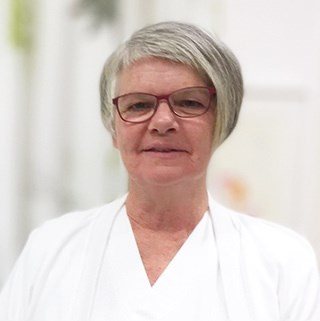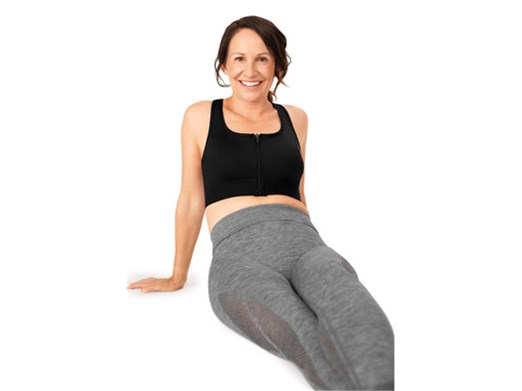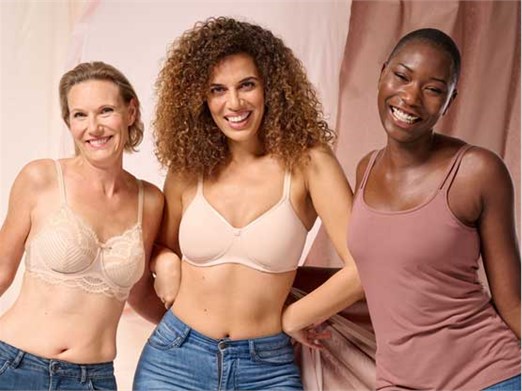Often Unaware: Lumpectomy prosthesis
Three experts explain why many women choose lumpectomy breast forms.

Is a breast prosthesis only for women who have had a mastectomy? No.
In fact, women who have uneven breasts after a lumpectomy, also known as breast-conserving surgery (BCS), are entitled to a lumpectomy prosthesis (also known as a breast shaper) to balance different size breasts.
The same sometimes applies to women who have uneven breast due to natural causes and struggle with asymmetry.
Solutions for uneven breast after lumpectomy, radiation & reconstruction

Some women know to seek advice on this but do all women actually know that they are entitled to a breast shaper? What particular breast symmetry challenges do they face?
We asked three experts from three different countries.
Expert 1: "The operated breast is often smaller"
 |
Angela von Bülow, 64, Breast Care Team Leader and Lymph Specialist, Sanitätshaus Stolle in Hamburg, Germany |
I used to work in anaesthesia as a nurse. About 20 years ago, I retrained to be a [breast] health professional and was very inspired by all of the helpful products — in the clinic I had only come into contact with things like prosthesis very rarely. At that time, mastectomy was absolutely the norm; breast-conserving operations were very rare. One problem that I often encounter in my work with BCS patients is the lack of information: With women who have a small tumour, the difference in size after their lumpectomy is often very small. As such, they are often not informed about the use of breast shapers, because everyone is aware that breasts sometimes naturally differ in size.
BCS patients see it differently; after all, their operated breast is not naturally smaller — it’s smaller because she was ill. Many feel uncomfortable with that asymmetry. Partial breast prostheses can help them go about their daily lives with ease. In my experience, women who have had breast-conserving surgery are often even more particular about their fittings than those who’ve had a mastectomy. But I think this is a good thing. At the end of the day, it’s about their body, and feeling comfortable in their own skin.
Expert 2: "Many women find, after reconstruction, that their breasts are different sizes"
 |
Sherry Kendrick, 44, certified mastectomy fitter for A Woman’s Place at Tallahassee Memorial Health Care Hospital in Florida |
The majority of my clients who wear breast shapers to balance uneven breasts — that is, about 20% of my clients — have either had breast-conserving surgery or a mastectomy with subsequent breast reconstruction. Many of them find, after reconstruction, that their breasts are different sizes and that they need some help with the asymmetry. Breast implants also lack the curvature of a natural breast. Silicone implants are rather flat at the front and as a result, the breast often doesn’t sit correctly in the bra cup.
In addition, radiation treatment can lead to shrinkage of the breast tissue, creating the need for a partial prosthesis. My experience in the last few years is that women know very little about breast shapers. Some of our BCS patients are advised by their doctors that they are entitled to these products — others find out by word of mouth from friends, family or women who are in a similar situation.
Expert 3: "In some cases, the size difference is only visible after a year or more"
 |
Ingrid Sandén, 58, breast care nurse at Skåne Hospital in Malmö, Sweden |
About one in ten patients who come to the breast centre in our hospital are fitted with partial prostheses. More than 80% of breast cancer operations in southern Sweden conserve the breast — this is of course also due to the great work of the surgeons. Because women usually undergo radiation after a breast-conserving operation, the breast often remains swollen for an extended period. During this time, balancing prostheses are not yet necessary.
In some cases, the size difference is only visible after a year or more, or when the patient has either gained or lost weight. Personally, I don’t find fitting a partial prosthesis more difficult than fitting a full one. I simply try out different shapes and sizes with the women, until we find the right fit.








